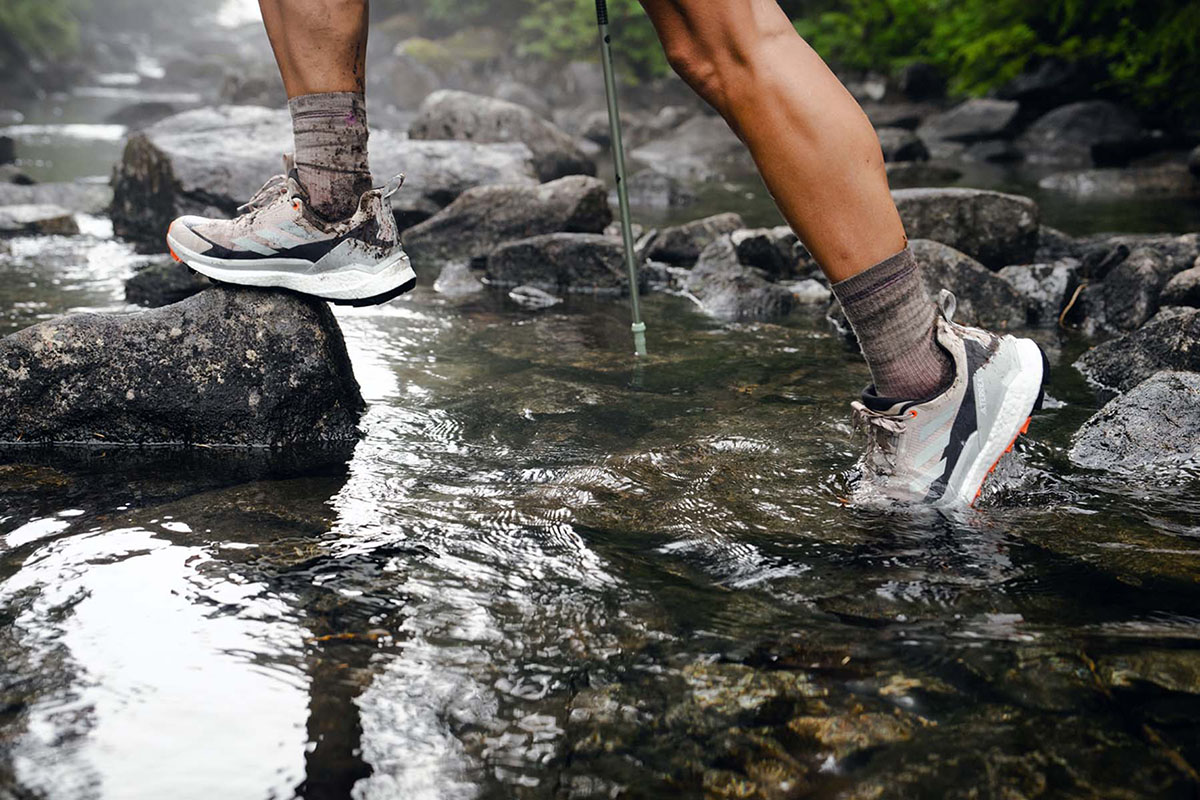
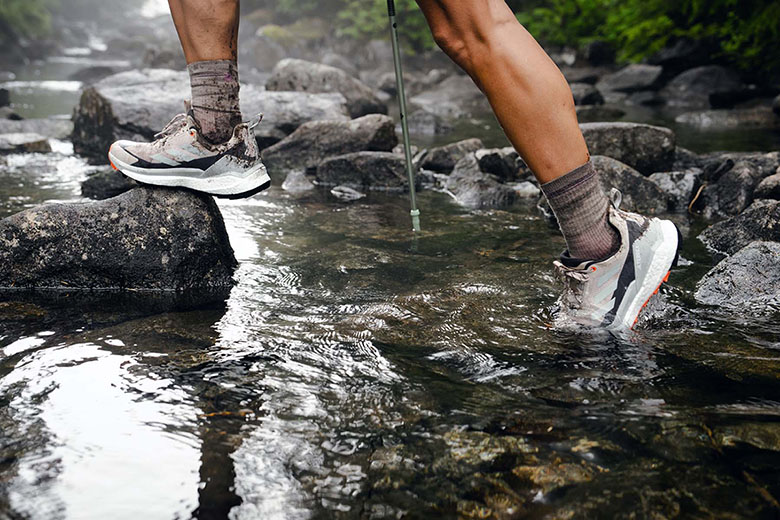
We get this question a lot: Do your hiking shoes or boots need to be waterproof, or can you do without? Hikers and backpackers fall on both ends of the spectrum—some prefer the unparalleled breathability of non-waterproof footwear, while others prioritize protection against the elements and don’t mind the sacrifices. Below we break down the major considerations, including waterproofing technology, breathability, and performance, as well as the best uses for both waterproof and non-waterproof footwear. For options in both categories, see our articles on the best hiking boots and best hiking shoes, or our roundups of the best waterproof shoes and waterproof boots if you know you want to take that route. For women's-specific picks, we've also put together separate round-ups of the best women's hiking boots and best women's hiking shoes.
Editor's note: We updated this article on July 22, 2024, to ensure all information was accurate at the time of publishing, which involved swapping several product references and links, as well as ensuring all comparisons were up-to-date.
Hiking boots and shoes billed as “waterproof” have a lining made of a waterproof membrane (often Gore-Tex) underneath the outer shell. This membrane is made up of expanded polytetrafluoroethylene (commonly shortened to ePTFE) and is sandwiched between a lining and a knit backer. To provide a comfortable fit, these three pieces are bonded and sewn together into a sock-like "bootie" and placed inside the upper. For simplicity’s sake, we’ll focus on Gore-Tex throughout this article, as it’s the most common technology in hiking footwear. However, it’s helpful to note that some manufacturers use their own proprietary waterproofing technology—such as Keen's in-house membrane called Keen.Dry found in their popular Targhee IV Waterproof—that works in a similar way.
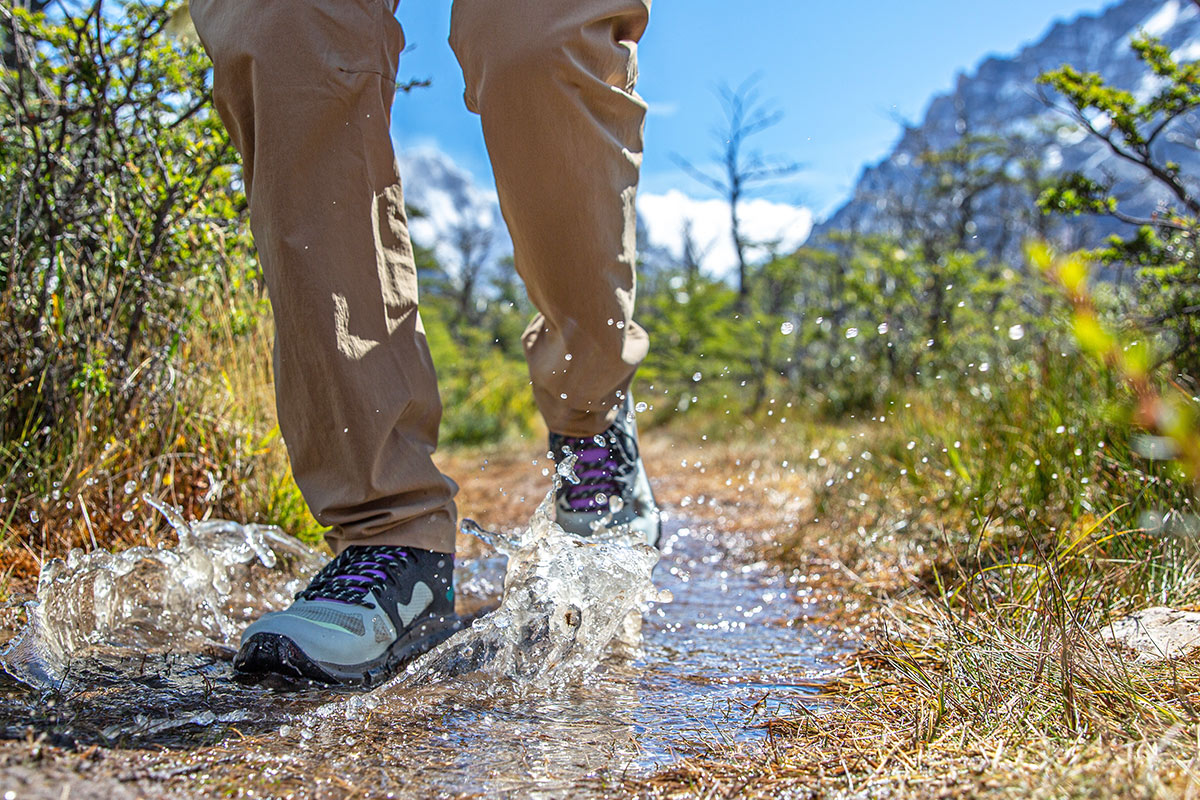
For extra protection in addition to a waterproof membrane, a shoe’s upper is often made of a water-resistant material or treated with a durable water repellent (DWR) coating. However, this treatment does wear off over time and requires some care to restore. Some hikers cure their leather shoes with a special treatment such as Nikwax each season, and DWR can be reapplied with a similar spray-on or wash-in revival product.
Keeping water out might seem like a no-brainer, but it’s important to consider the consequences: If you're sealing moisture out, that also means you're sealing it in. This means a waterproof shoe won’t breathe nearly as well as a non-waterproof design, no matter how much it advertises breathability. Non-waterproof boots are usually made with ventilated uppers and more breathable mesh liners, which allow sweat to escape more easily. Imagine wearing a plastic bag while hiking in the rain—while it will keep water from seeping in, it will also clam up and become noticeably damp and sweaty inside. If you spend all day hiking in warm, humid conditions, your feet will feel similarly. That said, Gore-Tex membranes are designed to allow moisture to escape, ventilating from the inside out. We've found this works reasonably well in mild temperatures (and adds a nice dose of insulation in the cold), but the fact remains that waterproof footwear can run notably warm in hot weather.
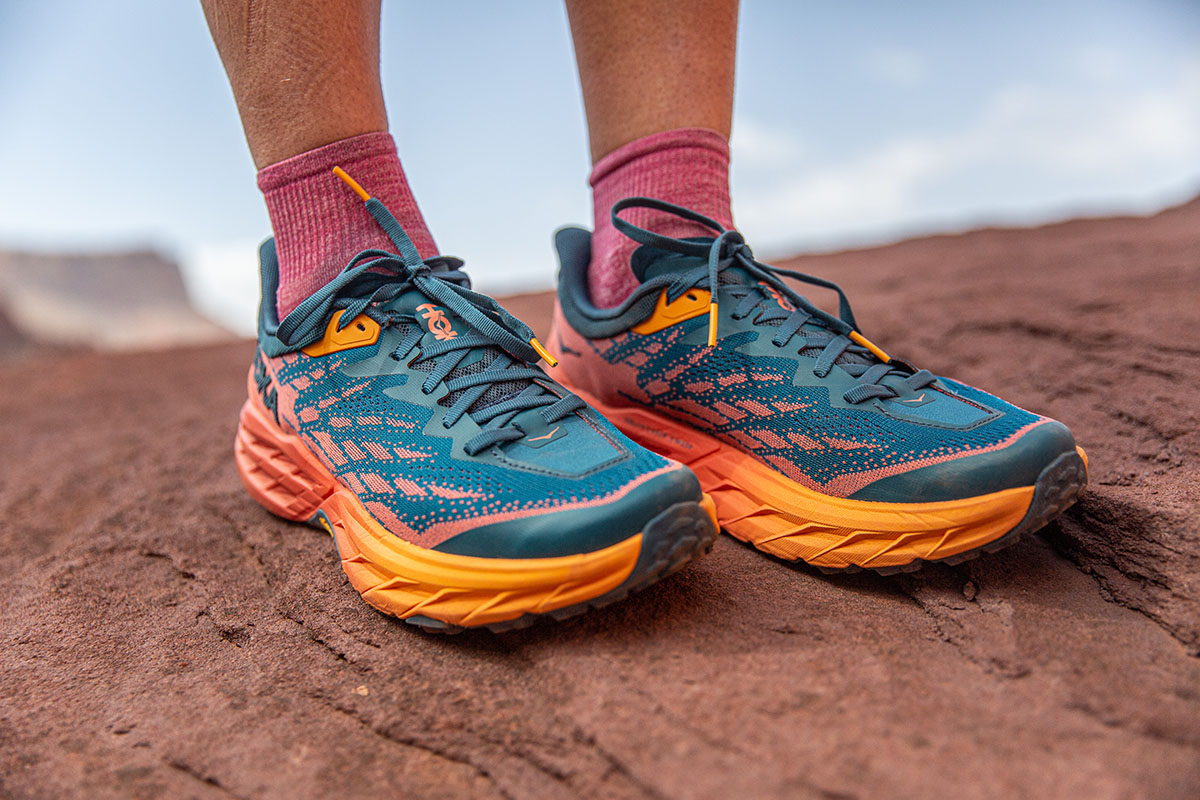
A waterproof shoe will almost always cost and weigh more than its non-waterproof counterpart. For instance, the Gore-Tex version of Salomon's light and flexible X Ultra 4 shoe retails for $160 and weighs 1 pound 11.5 ounces per pair, while the non-waterproof model shaves off $20 and around 2 ounces per pair. And you can expect similar comparisons for non-Gore-Tex models. For example, the Oboz Sawtooth X Mid Waterproof boot—which uses their in-house B-Dry membrane—costs $180 and checks in at 2 pounds 6.8 ounces per pair. Stacked up against its non-waterproof sibling, it costs an additional $15 and weighs 0.4 ounces more.
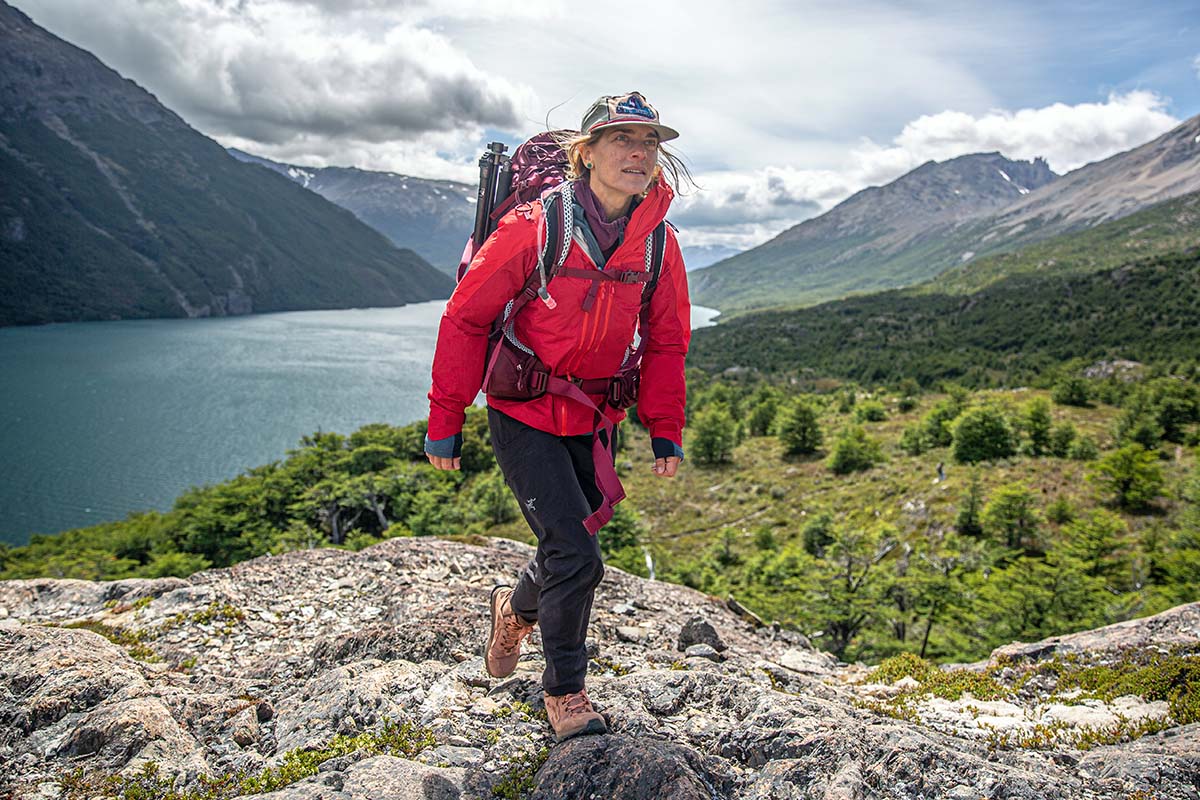
In short, no hiking shoe or boot is 100% waterproof. In order to provide total waterproofness, a fabric would have to sacrifice all breathability. Remember those bright yellow rubber boots you wore as a kid? Sure, they kept your feet bone-dry while you splashed through puddles, but once you started running around, the sweat buildup probably became noticeably uncomfortable.
To prevent this, hiking footwear is more breathable, but that means sacrificing some waterproofing. In other words, waterproof hiking boots will do their job—for a while. However, dirt, sand, and other grime can dirty the delicate waterproof membrane, eventually compromising its ability to keep you dry from both the inside (from sweat) and outside (from moisture working its way through). The best way to keep your shoes as waterproof as possible is to clean them consistently, but that isn't always an option on extended trips or when covering harsh terrain.
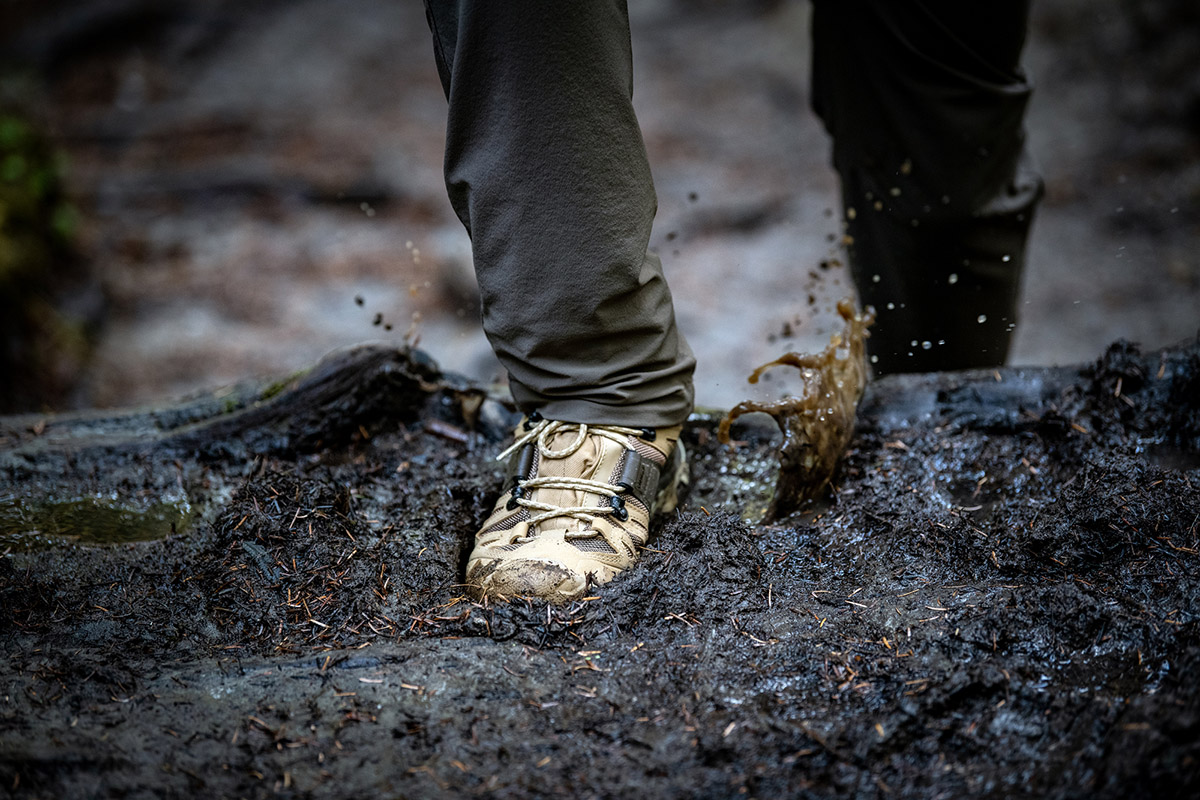
Height should also be a consideration when weighing your options. While waterproof liners do an admirable job of keeping precipitation out, there’s nothing to prevent water from flooding in over the top as you wade through creeks or attempt a deep river crossing. Hiking boots with higher ankles will help—non-waterproof boots are our preferred choice here, which we discuss in more detail below—but they're still vulnerable to splashes or if you lose your footing.
Your shoes got wet unexpectedly—it happens to the best of us. Now the question remains: Will non-waterproof or waterproof boots dry faster? Non-waterproof shoes often use mesh or another fabric with larger pores, meaning air will flow much quicker and easier through the materials, expediting the drying process. On the flip side, because of waterproof shoes’ minimal airflow, water is more likely to remain in the fabric once it penetrates the liner. Waterproof shoes bogged down with moisture can feel heavy on the trail and lead to foot irritations and blisters. In instances where you'll be getting your shoes consistently soaked like creek crossings (unless you plan to remove the shoes), non-waterproof designs win out and will dry much quicker if they have been soaked through. In other words, while it may seem counterintuitive, if we're expecting a lot of water crossings, we actually prefer non-waterproof designs.
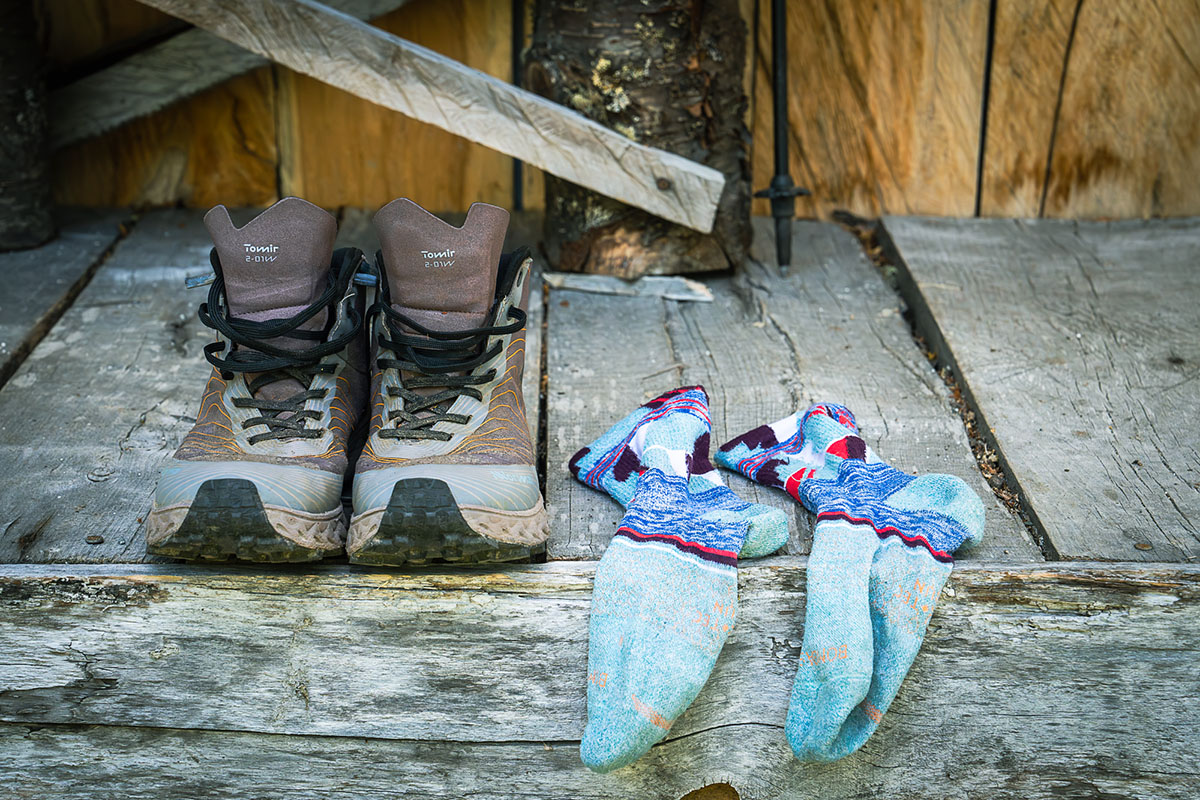
You’ll probably see all of these terms thrown around when shopping for hiking boots—or any outdoor gear, for that matter. While there are no industry-wide definitions, there are some rough translations. You can count on anything made with Gore-Tex to offer solid levels of waterproofing (but remember there are limits), and we've found that many in-house waterproofing technologies are fairly similar, although performance is less consistent between brands and models. Boots labeled as water-resistant are often a step down from those labeled as waterproof—they can resist light to moderate precipitation, but anything more than that is likely to penetrate. Finally, footwear billed as water-repellent is usually surface-coated with some sort of treatment (like a DWR finish) that repels light moisture upon impact but wears off over time (again, it can be revived to maximize longevity).
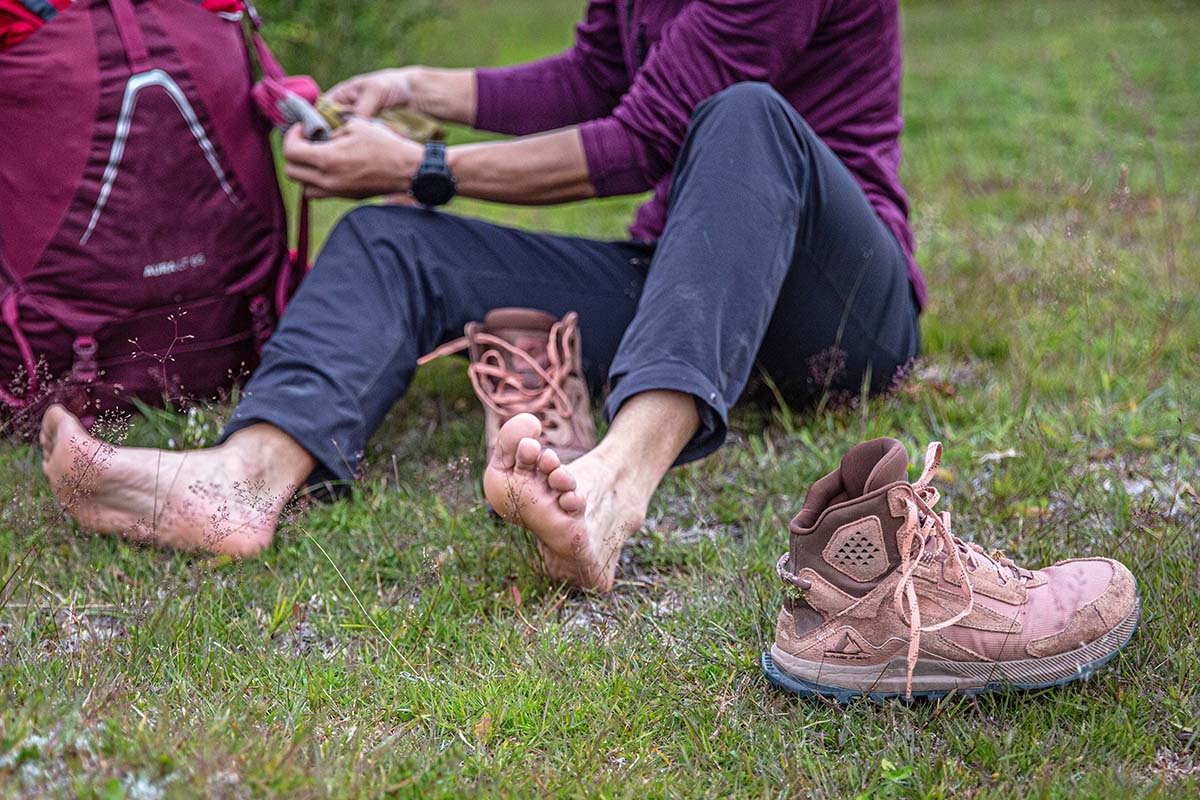
There’s no reason to spend the extra money or carry the extra weight of a waterproof boot when you’re hiking in a hot, dry climate—think southern Utah or the deserts of California and Arizona. When the biggest threat is your own sweat as opposed to heavy rain, it's best to opt for a non-waterproof shoe for its added breathability. Similarly, for fast-and-light missions, added ounces from a waterproof shoe can feel like pounds over several days or extended mileage. In these cases, a non-waterproof shoe like the Altra Lone Peak 8 or Hoka Anacapa Breeze will cut weight and also increase sweat evaporation during higher-output hiking. And as we mentioned, we wouldn’t recommend taking a waterproof shoe on an expedition with deep, frequent river crossings. In these cases, a quick-drying option is preferable over a thicker, lined boot that will hold onto water much longer (although water shoes or hiking sandals may be the best choice in these circumstances).
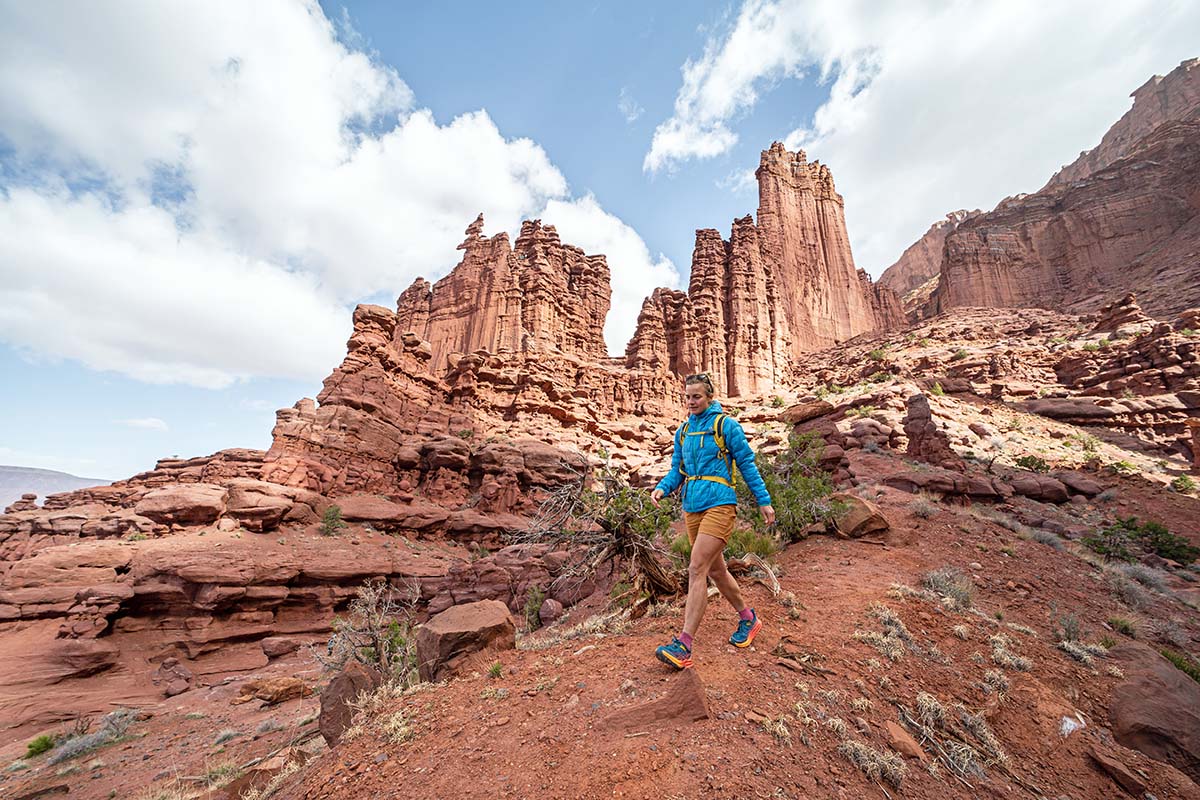
There’s certainly a time and place for waterproof footwear—namely damp, cold weather or terrain that's muddy or snowy. Think winter hikes, shallow stream crossings, and day trips in frequently wet climates. We also bring our waterproof hiking footwear to areas prone to daily rain showers or cooler places where we won’t be working up a sweat. Ultimately, the ideal uses for a waterproof hiking shoe end up falling mid-spectrum. In other words, while non-waterproof footwear excels in ultra-dry climates and is a better choice if you’re planning to ford deep bodies of water, waterproof shoes will perform better in moderate rain and snow.
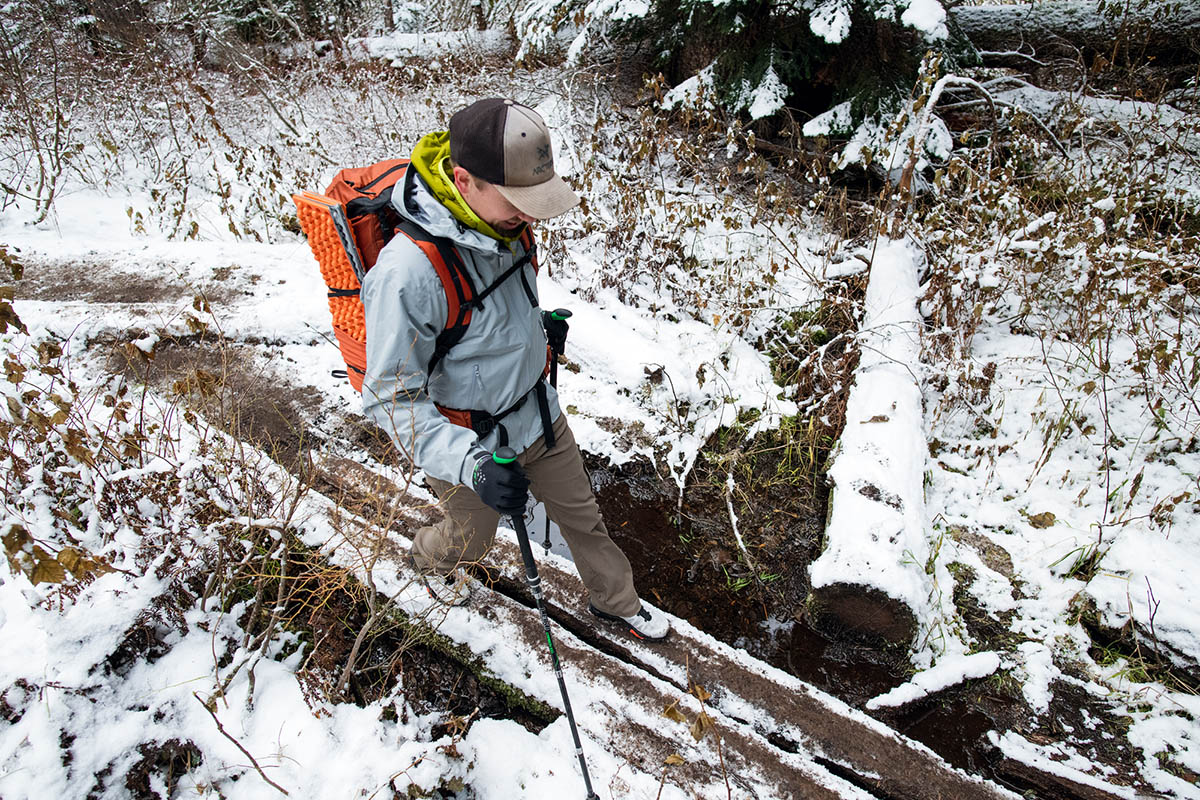
When deciding which type of hiking shoe or boot to purchase, terrain and climate should be important considerations. If you’ll be heading into conditions that lie on either extreme—like a hot and dry desert or extremely wet, river-ridden environment—consider non-waterproof footwear or multiple pairs of shoes. Some backpackers and thru-hikers turn to non-waterproof shoes with trail gaiters over the top for added protection in especially inclement weather, which can be a nice compromise (although water will still enter at the sides of the shoe). In the end, the decision often comes down to personal preference. If you're just getting started, we recommend trying on a few pairs, doing research on where you’re headed, and talking to gear shop experts that understand your local conditions. It might take a bit of experimenting to determine what’s right for you.
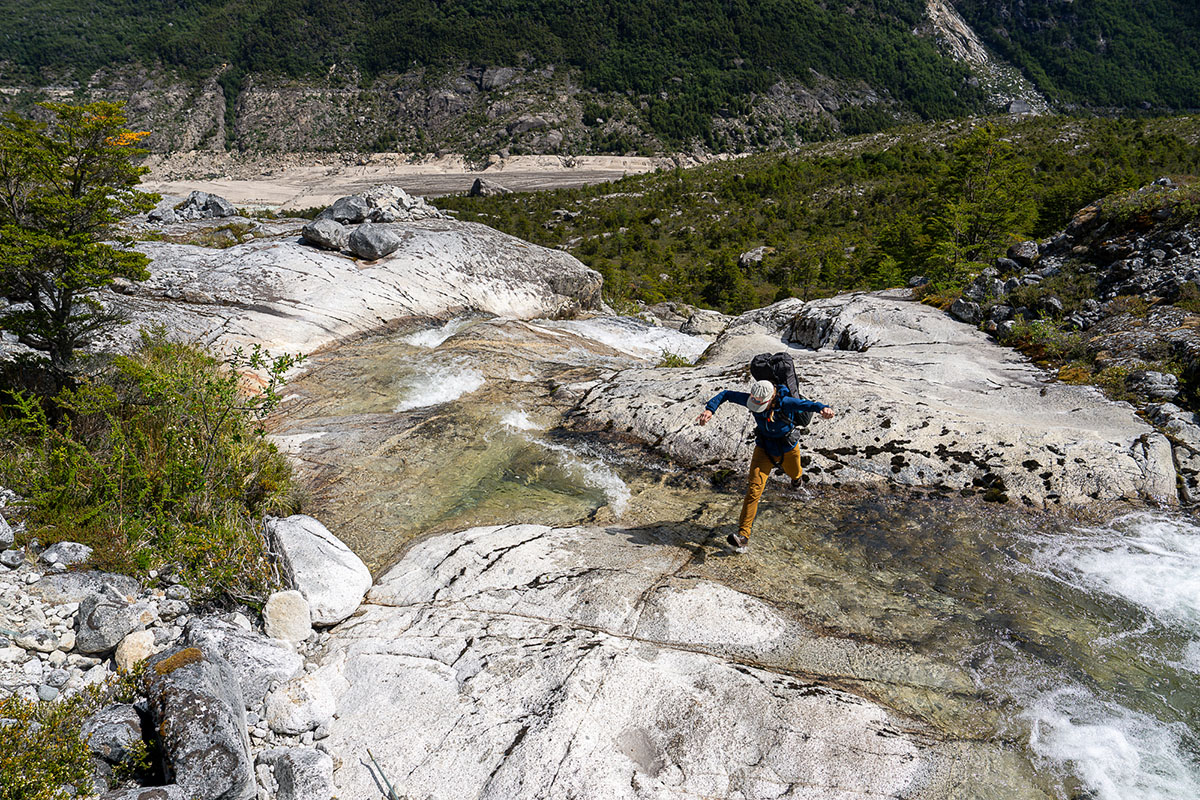
Whether you’ve decided waterproof hiking shoes or non-waterproof hiking shoes are right for your needs, here are our top selections for both categories. For more of our top picks, see our full articles on best hiking shoes, women's hiking shoes, hiking boots, and women's hiking boots.
Best overall: Salomon X Ultra 4 Mid GTX men's / X Ultra 4 Mid GTX women's
Best budget: Merrell Moab 3 Mid WP men's / Moab 3 Mid WP women's
Best for backpacking: Salomon Quest 4 GTX men's / Quest 4 GTX women's
Best max-cushioned boot: Hoka Anacapa 2 Mid GTX men's / Anacapa 2 Mid GTX women's
For fast-and-light mountain adventures: La Sportiva Ultra Raptor men's / Ultra Raptor women's
Best overall: Salomon X Ultra 4 men's / X Ultra 4 women's
Best budget hiking shoe: Merrell Moab 3 men's / Moab 3 women's
Best ultralight and cushioned hiking shoe: Hoka Speedgoat 5 men's / Speedgoat 5 women's
Best for off-trail scrambling: La Sportiva TX4 Evo men's / TX4 Evo women's
Best non-waterproof boot: Hoka Anacapa Breeze Mid men's / Anacapa Breeze Mid women's
Back to Our Waterproof Footwear Guide See Our Hiking Gear Reviews